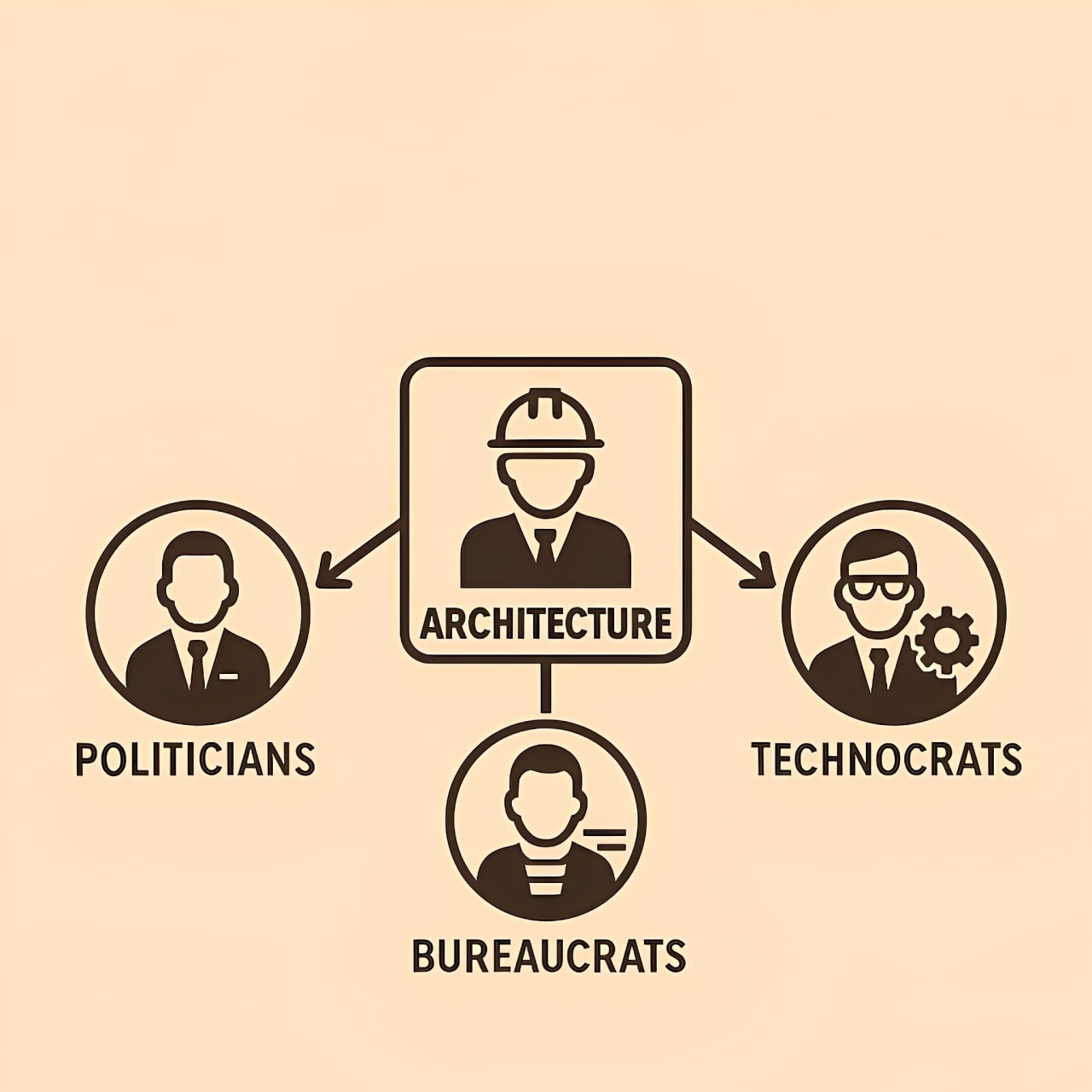by: Arc. Biola Akinola, mnia

Over the weekend, I had a thought-provoking discussion session with one of the leaders in the profession that opened my eyes to one of the banes of our urban infrastructural structure. Let’s not sugar-coat it: the disconnect between policy, technical know-how, and actual delivery is the Achilles’ heel of many developing nations, Nigeria included. And architecture, with the architect as its human face, is the missing nexus – the link that should be binding these critical power centres into one cohesive delivery machine.
To do justice to the depth and urgency of this conversation, we’ll be unpacking it in a two-week series. This week sets the stage, exposing the gaps and reintroducing the architect as the vital bridge between vision and execution.

Introduction: Where’s the Architect?
Everyone’s talking about policy, budgets, and projects, but where’s the architect?
In most of Nigeria’s public sector projects today, from housing to infrastructure to education and healthcare, architects are either called in too late or not at all.
Yet, when the vision of politicians collides with the bureaucracy of the civil service, who is trained to interpret, translate, and guide that dream into reality?
“Between the blueprint and the ballot lies a forgotten profession — architecture.”
This is not just a lament. It’s a call to reclaim the architect’s rightful space at the intersection of governance, design, and delivery.

The Missing Nexus (1)
Between Politicians and Technocrats: Lost in Translation
Politicians often dream big. They craft manifestos filled with smart cities, mega housing estates, education hubs, green infrastructure… you name it.
Technocrats, engineers, and economists then take over and reduce those dreams to spreadsheets, feasibility studies, and procurement templates.
Where is the architect?
Frequently excluded or called in late, only to decorate an already-flawed concept.
Why is this problematic?
Because only architects are trained to humanize policy. Through design, we give vision form in order to address issues, uphold dignity, and convey our sense of national identity. Without us, projects become sterile, disconnected from place and people. What you get is buildings without soul and cities without rhythm.

The Missing Nexus (2)
Between Technocrats and Bureaucrats: Stuck in Red Tape
Technocrats design infrastructure. Bureaucrats process files. But who bridges aspiration with execution?
Architects, ideally!
We understand how to move ideas from the desk to the site. We manage complexity from environmental regulations to zoning codes to community consultations. We speak the language of both the project engineer and the urban planner, the public health officer and the procurement officer.
In fact, project management at an urban scale is impossible without architectural thinking, which balances aesthetics, functionality, sustainability, and systems coordination. But too often, that seat at the table is given to people who only think in silos.

The Missing Nexus (3)
Between Politicians and Bureaucrats: The Mistrust Gap
Politicians want to build legacies. Bureaucrats want to follow rules. And somewhere between that dance of ambition and caution, public interest dies.
Enter the architect: someone who can translate political vision into public benefit and still play by the book. We understand community needs, budget realities, and long-term impact. A good architect is not just a designer but a civic mediator, shaping not just buildings but public trust in governance.

Who Is the Architect, Really?
Not just a draftsman.
Not just a builder.
Certainly not an afterthought.
The architect is:
- A systems thinker
- A spatial interpreter
- A communicator of vision
- A translator of policy into physical reality
- A conductor of consultants, craftsmen, and contractors
In the best of worlds, the architect doesn’t merely decorate the finished idea. They orchestrate its realization. They are trained not just to design buildings but to imagine possibilities and deliver them holistically with both heart and head, soul and structure.

So, Why Are Architects Missing?
Simple: we’ve allowed ourselves to be boxed in as “building drawers”.
We’ve stopped telling our story as thought leaders, spatial economists, problem-solvers, and nation-builders.
Our education system trains us for complexity, but we step into the real world and accept token roles. Politicians don’t understand our value. Technocrats don’t see us as equals. Bureaucrats see us as delay agents.
That must change!
To be continued…
Discover more from dorted
Subscribe to get the latest posts sent to your email.







